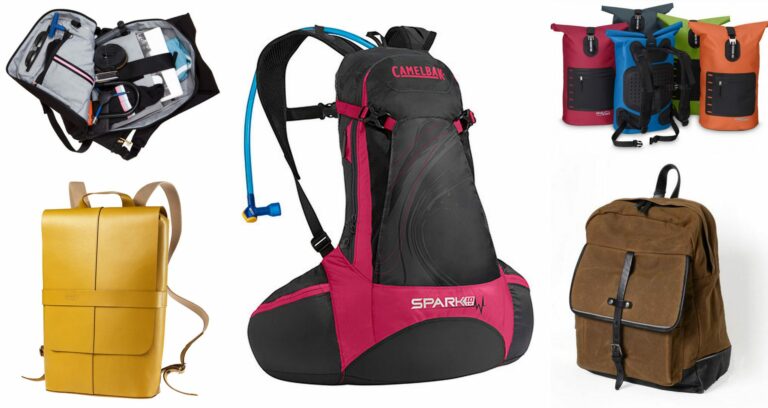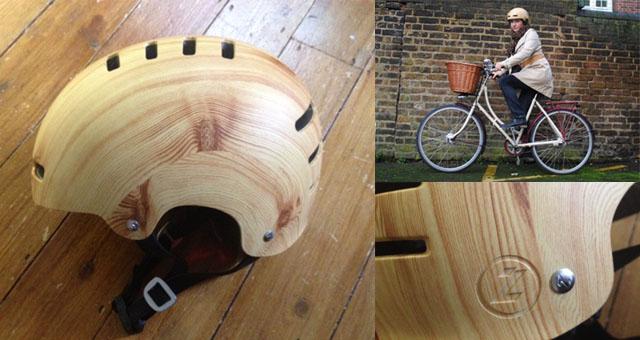If you cycle to work regularly or ride in an urban area, you’ll be used to sharing the road with a variety of vehicles, each of which present their own challenges and safety issues.
Knowledge, training and a bit of skill and confidence can manage the vast majority of these challenges. This holds true for riding near Heavy Goods Vehicles, or HGVs, which is why the Metropolitan Police have set up the Exchanging Places program.

They’re big and they’re intimidating, but some knowledge about how they operate, how their drivers observe the world outside the vehicle, and what to do and not do as a cyclist can help you navigate your way around them safely.
Exchanging Places
Exchanging Places gives cyclists the opportunity to sit in the cab of a HGV and see what their drivers see, complete with a stunt cyclist riding as if in traffic.
It’s eye opening, to say the least. Even in a HGV cab with lots of mirrors – 7 plus! – There are so many places around the vehicle where a bike literally disappears from view, or is very hard to spot.

This is one of the reasons hi-vis clothing can really help – a flash of yellow in the mirror catches the attention much more than dull colours against a dull background, even if both are moving.
One of the spots on the road that can feel falsely safe on a bike is just to the left and front of a vehicle – but from a HGV cab, it’s impossible to spot anything in that area, cyclist or otherwise. Ditto right in front of the cab. These areas should be avoided like the plague, particularly if you are stopping at traffic lights or junctions.
Keeping track of all the mirrors, while navigating traffic, must be an extremely tricky task, and seeing things from this perspective does make you think – is it really worth squeezing down the inside of the truck for the sake of a few minutes?
This doesn’t address all the issues – work is being done to make sure more (and ideally) all HGV are fitted with safety features like side guards, and the mirror array that’s seen in the Exchanging Places trucks, as not every HGV has them. Much greater awareness of what it’s like to cycle in a city is needed too.
There are also issues around road and junction design and the location of cycle lanes and superhighways. Having a path that can channels cyclists down the inside of vehicles on narrow roads with nowhere to go is a big problem, for instance.
Various discussions are being held as to whether HGV access to London should be limited to various times, or banned all together. Similar restrictions operate in Dublin and Paris, and are one of the elements of the Labour Party’s cycling manifesto.
Advice on how to navigate HGVs
1. Hang back behind the vehicle if it’s not safe to overtake, or if the HGV is indicating to turn.
2. Don’t be tempted to ride up the inside of a HGV, especially if the vehicle is indicating left. This holds true even if there is a cycle superhighway or a bike lane on the left – they are not always the safest place to be in the road.
3. If you are ahead of a HGV at traffic lights, or if one pulls up behind you, make sure you are a good distance ahead of the cab of the HGV – the Met Police Cycle Task Force recommend 3 meters.
4. Don’t stop just in front of the cab, or to the either side alongside the vehicle.
5. Wear some hi-vis clothing or a waistcoat.
6. If you’re unsure on how to navigate road junctions and turnings, sign up for some cycle training.
7. And of course, if you are riding at night or in low-light conditions, make sure you have working lights and that they are on.
Who organises it?
The Exchanging Places program is operated by the Cycle Task Force, a specialist team of officers from the Metropolitan Police Service, run in conjunction with Transport for London.
The officers work with several suppliers and have a selection of HGVs that are used for the event, as well as various resources and props that help with the demonstration.
What happens at an Exchanging Places event?
The events are free, so you are interested, just pop along. There’ll be a friendly member of the police available who’ll take you through the various scenarios that can occur while you site comfortably in the cab and play spot the cyclist.
There’s usually also a range of other helpful things going on – free bike safety checks, a mechanic available to do any repairs you need (though these may be charged for), free bike marking and some hot drinks and grub eat as you digest the experience.

Want to go along?
We’d highly recommend going along and getting a HGV drivers eye-view of the road, and taking the opportunity to get your bike marked while you’re there.
Exchanging places events run regularly throughout London in various locations, and the full list which is updated regularly is available on the Metropolitan Police website.
- 24th October – Eel Brook Common, Hammersmith, 16.00 to 18.30
- 29th October – Northumberland Street WC2, 7.30 to 10.00am
- 7th November – Naval Row E14, 7.30 to 10.00am
- 11th November – Eddystone Road, Brockley SE4, 7.30 to 10.00am
- 12th November – Victoria Park E9, 7.00 to 10.00am
- 20th November – Potters Field Lane SE1, 7.30 to 10.00am
- 29th November – Shoreditch Fire Station EC1V, 7.30 to 10.00am
- 3rd December – Spitalfields Market E1, 7.30 to 10.00am
What else can you do?
If you’re eager to take to two wheels – and it’s still the best way to get to work in our opinion – but you’d like to know more about how to navigate the road environment, then sign up for some cycle training. A lot of local authorities offer free training, and it’s well worth taking up.
They’ll go over how to signal, navigate junctions and other vehicles, and make sure you are skilled and confident, ready to power your way to work.





